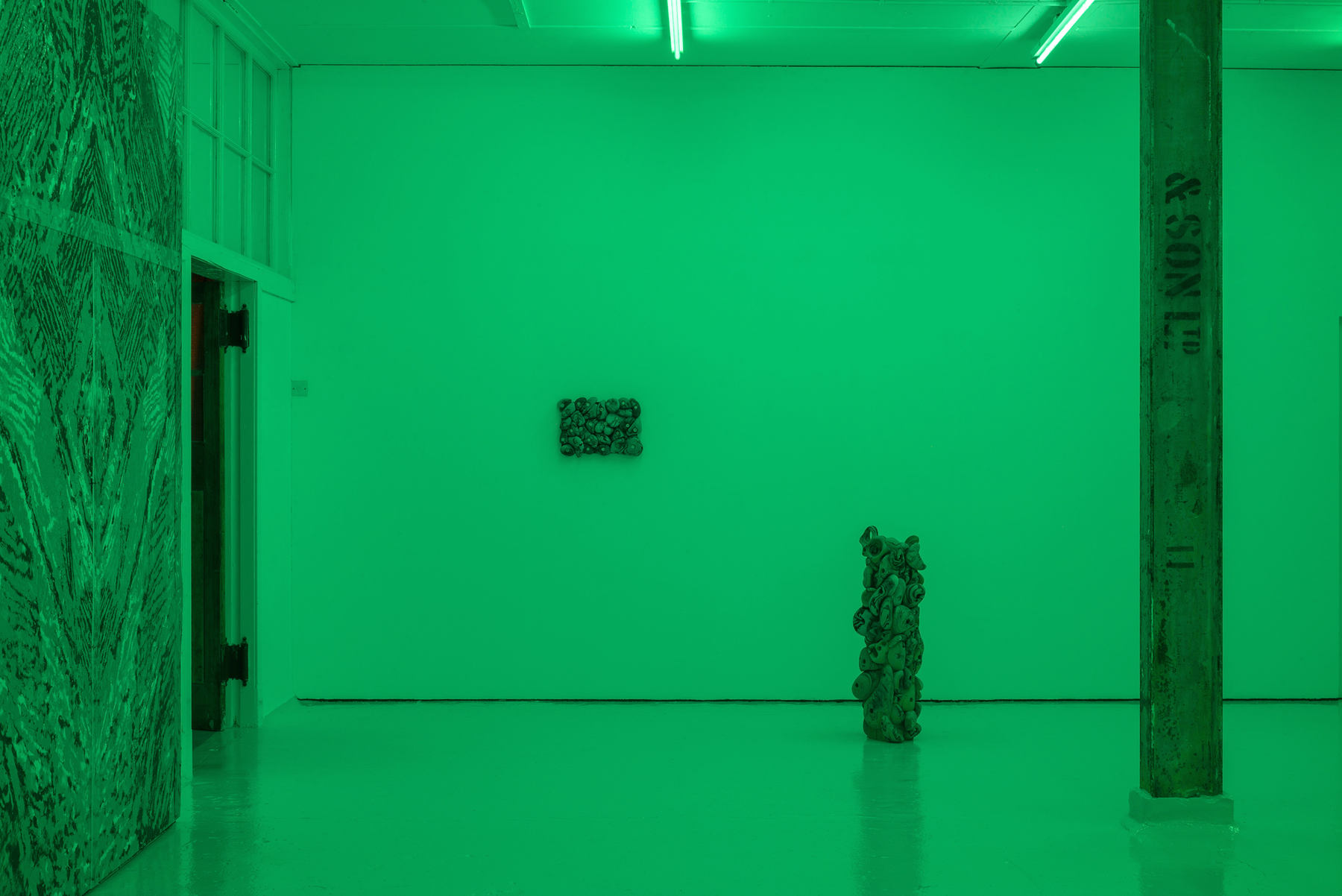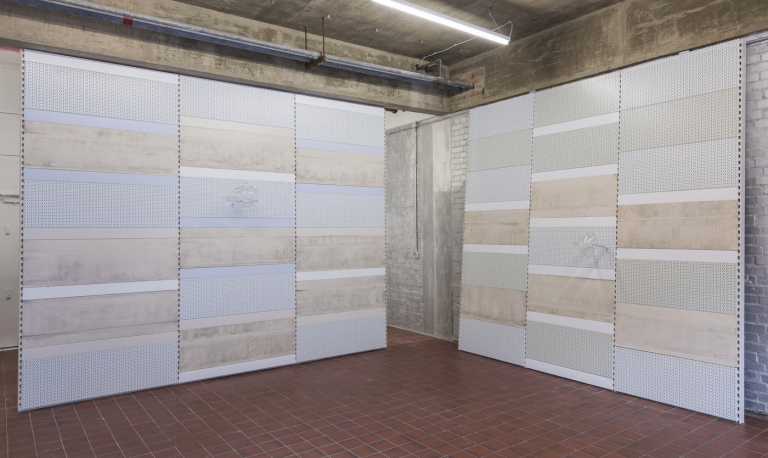Artist: Mirko Canesi
Exhibition title: Contra
Curated by: The Workbench
Venue: David Dale Gallery, Glasgow, UK
Date: November 9 – December 15, 2018
Photography: all images copyright and courtesy of the artist and David Dale Gallery, Glasgow
Note: Text by Owen Vince can be found here
Mirko Canesi’s artistic research revolves around the concept of reality, and how it could be modified, perceived and utilised.
In the artist’s vision there are no such things as barriers between sides and his goal is to unite what appears distant and incompatible, making different bodies co-exist to give rise to a third way. This way should not be told through the artistic artifice, but by turning the artistic action itself to an existing and concrete thing, which, once real, begins to trigger new dynamics.
Mirko Canesi’s research is focused towards the activation of a process in which cultural superstructures are removed and the filters of a subjective vision are limited, with the aim of identifying the possibilities and beauty that the solid plane of reality already offers.
Reality as such is seen as a complex medium or display which offers itself to support different visual contents. Employing various manmade and industrial materials, Canesi imagines new aesthetic possibilities in which the relationships between natural and artificial are diluted, integrated or emulated in each other. Reality is then analysed over and again.
Within this mental framework, the artwork, reaching its so called activation state, becomes the epicentre of a critical and empirical reflection of reality.
For his exhibition, Contra, at David Dale Gallery, Glasgow, curated by The Workbench, Canesi organises the exhibition in two complementary environments: the Gallery’s own space and the Garden.
In the gallery, the environment filled with green light directs the reading of the present artworks in a predetermined way such as the paneling made of a series of modular elements covered by black, white and grey silicone and placed over one of the space’s walls; a large art work that repeats mimicking mirrored marbles. It also integrates on its surface the projection of a fragment of the animation film Akira (Japan, 1988), specifically the famous opening scene portraying the showdown of motorcycle gangs.
The planters in the space contribute a recurring element of the artist’s production, in which plants become a sort of official device for the display of visual content, without caring much for the type of content expressed. The three planters exposed, shaped like cubes moved to 60° like in axonometric plans, host plants that have undergone marbling procedures on their leaves.
The rest of the gallery hosts sculptural elements made up of by resin-made climbing grips, objects that were mass-produced independently from the artist’s will, taken away from the industrial production because of the erroneous assumption on the non-artificial nature of their material, just because of a similarity with rock. Now they are the basis for the creation of a new covering material.
By contrast, the Garden space hosts a sculpture made up of a closed structure, a sort of cinema-greenhouse placed under a glass wall used as a canopy; the structure has been realised in profiled aluminium normally employed in the robotics industry, repurposed and modified by the artist in some parts.
The Cinema for Basil is a sculpture that was already temporarily made in 2014 and was re-edited for the exhibition at the David Dale Gallery. The project draws on the theories of para-scientist Masaru Emoto and his rice experiment, empirically proving how speech and “message” can influence matter.
During the experiment, cooked rice is put in three different containers, every day “thanking” the first one, saying “I hate you” to the second one and ignoring the third one.
After a month the “thanked” rice appears to be perfectly conserved, the second one, “insulted”, alters its form and becomes black while the third one, “ignored”, spoils entirely.
Similarly to the spoken word, comparable results can be achieved by putting labels on which hate or love words are written.
There are many witnesses of this that can be found online, in media such as YouTube, where curious or skeptical people have recreated the experiment, obtaining the same result.
In Cinema for Basil, Canesi assumes that Dr. Emoto’s theories are true and proceeds by speculating what could happen if information, as immediate but sensibly more complex, was to be given to an edible plant during its growth.
Cinema for Basil is a closed structure which functions as a greenhouse (controlled lighting and temperature) suitable for the growth of plants, in which these grow as if they were the audience to a 24/7 show of the repeated audio-video segment Rite of the Spring, Fantasia, 1940, Walt Disney, during which the origin of life and the subsequent fight for survival among dinosaurs is shown, until its conclusion when a Tyrannosaurus kills a Stegosaurus. Some screenshots have been replicated by the artist on the external surface as wooden inlays, ironically made out of plastics which mimic wood.
The work aims to alter the vision of the viewer beyond the rice experiment’s initial assumption so as to trigger new paths of thought beneficial for the creation of new systems.






























